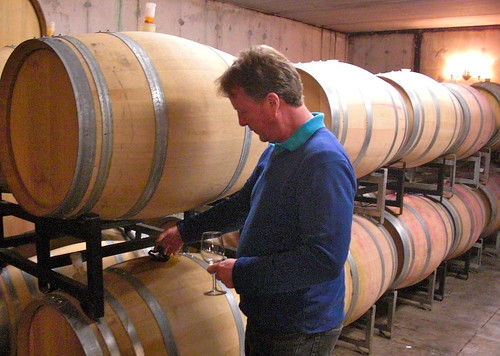
Tasting in the cool, dark confines of a winery barrel room is not the perfect environment to assess wines. But it does give you an indication, a tiny hint, of what the wine will eventually grow up to become.
I spend a lot of time in barrel cellars tasting components of oak-aged wines in various stages of evolution. Winemakers seem to be happiest plunging their thiefs into this or that barrel, sipping and imagining how well Sample A will get along with Sample B to bring together a glorious union one or two years down the road when A and B are ready to get married. And, often, a C and even a D are added to the wedding party for even greater marital bliss.
Winemakers revel in the art of the blend and are always thinking about how to best prepare their babies for a better future.
Such is the case with Angels Gate winemaker Philip Dowell.
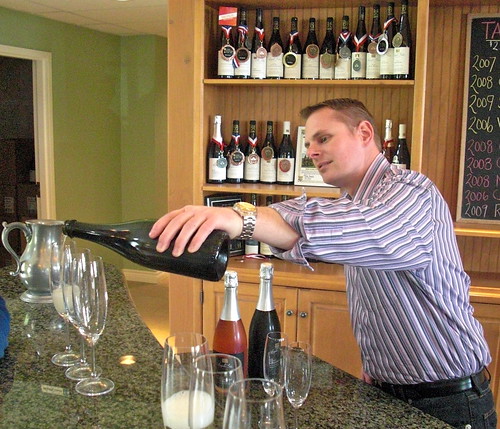
A recent visit to the Beamsville winery, nicely located on the well-appointed Mountainview Road, quickly moved from sipping the wonderful portfolio of sparkling wines in the tasting room to the barrel cellar where Dowell is nurturing a wide selection of barrel aged reds and whites.
Along with AJ McLaughlin, marketing and sales manager at the winery, we were treated to some wonderful samples of the first oak-aged Pinot Gris he’s making at the winery and the 2010 Chardonnay and Pinot Noir from the top Mountainview tier.
Dowell’s debut Pinot Gris is still a work in progress. The sample he pours is from the hot 2010 vintage and aged in new French oak barrels. It’s weighty and unctuous with sweet oak flavours on the palate. The winemaker says he’s looking for structure on the palate with the oaked Gris and will likely blend it with another block of Gris, unoaked and picked earlier, to bring some acid balance to the finished wine. Sort of a delicious marriage between the oily-meaty Alsace style and the fresh, fruity Italian style of Gris.

Dowell admits he loves “playing around with white varietals” and his first Pinot Gris will express the best of what that varietal can do in Niagara.
He next pours a sample of the oak-aged Old Vines Mountainview Chardonnay, which McLaughlin calls Angels Gate’s “cult wine.”
It’s made from 40-year-old vines and not released until two years after the vintage.
The young wine shows wonderful tropical, apple, butterscotch cream, oak, spice, structure and complexity. It will stay in oak until the end of the summer and age further in bottle for up to two years before it’s released. It’ll retail for $24 with only 200 cases made.
Next we try the Angels Gate Mountainview Pinot Noir 2010, the winery’s top Pinot.
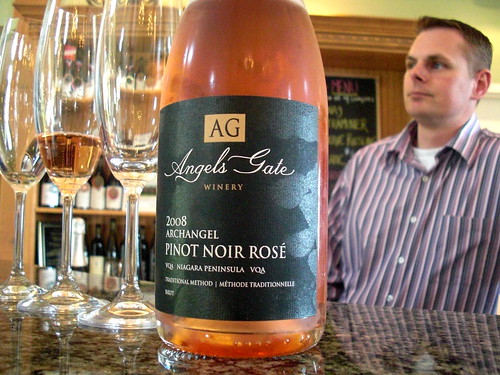
This Pinot is a blend of Angels Gate best fruit, mostly from (but not restricted to) the Mountainview Vineyard. “It’s not about a single-vineyard specific wine,” says Dowell. “It’s more about a reserve style.”
The first sample is rich, oak-laden and loaded with red fruits. It’s simmering in French oak barrels of different ages and toast and has a while to go before the final blend.
One of the components will come from a batch of foot-stomped grapes from Dowell himself. The winemaker did a week of daily stomping in a tank set aside for this old-school style of crushing.
Dowell filled up the tank with whole bunches of Pinot Noir grapes and slowly stomped the grapes as they fermented. Dowell recalls that stomping sometimes offered a shock to his feet when he hit a juicy hot spot in the tank.
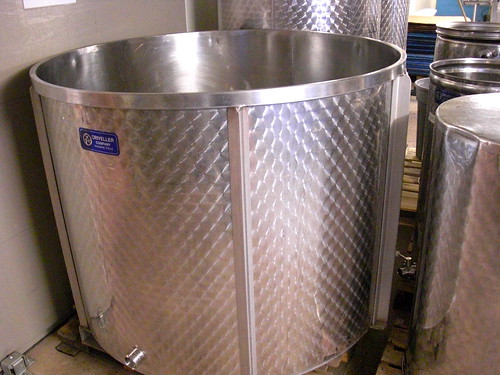
The foot-stomped grapes are leaner than the machine crushed grapes because of the amount of stocks in the juice, but it brings an added element to the final blend that Dowell feels is worth the strenuous physical activity.
As for the sparkling wines we tasted, here’s what I liked (the Archangel Pinot Noir Rose was previously reviewed):
Angels Gate Chardonnay Blanc de Blanc 2009 ($20, on the shelves soon, 89 points) — A very attractive price for a traditional style bubbly that spends 12 months on the lees before disgorgement. An expressive nose of apple, citrus, peach, yeast and toast. It’s fruity and zesty on the palate with a clean finish. Just a nice, every day sparkler.
Angels Gate Archangel Pinot Noir Rose 2008 ($25, 88 points) — Made in the traditional Champagne method with a strawberry-cherry mousse nose with added yeast and freshness. Lovely berries on the palate, fresh and clean with a fine, vigorous bead of bubbles.
•••
I’ve also spent quite a bit of time in the cellar with Colaneri winemaker Andrzej Lipinski watching his collection of kiln-dried wines from their inception.
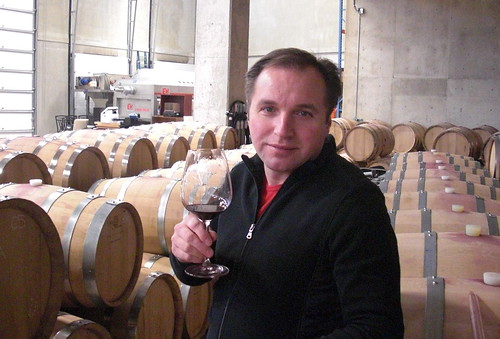
Lipinski, also the winemaker at The Organized Crime Winery in Beamsville and the new Burning Kiln Winery in Norfolk County, is making a career out of drying grapes in old tobacco kilns to provide a ripeness and structure in wines that nature can’t always deliver.
His appissimento style of air-dried wines at Colaneri are moving into their second vintage with nearly all the wines (only the Riesling 2010) undergoing some sort of drying process.
I tasted a slew of wines out of barrel recently and here’s what I liked:
Colaneri Cavallone Pinot Grigio 2010 ($25, May-June release, 89 points) — Lipinski used old oak barrels for fermentation and aging for this gorgeous style of Gris with eight hours of skin contact. It’s 20% kiln dried and finished slightly off-dry. The nose is pretty with floral notes and pronounced orchard fruits. It has beautiful mouth-feel on the palate with rich, powerful fruits and only a touch of oak and spice.
Colaneri Mistera Gewurztraminer 2010 ($25, May-June release, 91 points) — An exotic nose of fragrant rose petals, lychee, wild honey and spice. It’s concentrated (30% kiln dried) and viscous on the palate with rich grapefruit-lychee flavours and a fair amount of acid. Highly unique wine.

Colaneri Unita Cabernet Franc 2009 ($25, summer release, 88 points) — This is the first kiln-dried Cab Franc from the winery. Half the fruit was dried. The nose shows tobacco leaf, cherry, cedar and vanilla notes. The palate reveals kirsch, wild berries, some herbs and a lush finish.
Colaneri Visione Syrah 2009 ($30, summer release, 90 points) — 50% of the fruit was kiln dried. This is an elegant style of Syrah with red and black fruits, pepper, smoke, oak and spice on the nose. Love the acid in this wine to go with roasted meats, blackberry-currants and lavish spice. It’s smooth and long on the finish.
We also tasted Lipinski’s new line of sweet recioto style white wines including chenin blanc, gewürztraminer, sauvignon blanc and vidal. He’s making this style of dessert wines instead of icewines to be consistent with the dried-grape portfolio.
Here’s a couple to watch for in the late fall:
Colaneri Chenin Blanc Recioto 2010 (priced below $30 for a half bottle, 92 points) — Picked at 28 brix and finished at 13% alcohol, this is a very fine dessert wine with sweet melon, peach and honey aromas. The palate shows a highly textured and thick wine with rich, sweet peach and lemon flavours balanced by racy acidity.
Colaneri Gewurztraminer Recioto 2010 ($30 for a half bottle, 93 points) — A crazy-beautiful exotic style of Gewurz that would be a gorgeous match for a sweet, rich dessert. Such a nose of grapefruit, honey and rose petals that all carries to the palate where the fruits are joined by roasted almonds and spice. The finish lasts and lasts. Wow.
Enjoy!


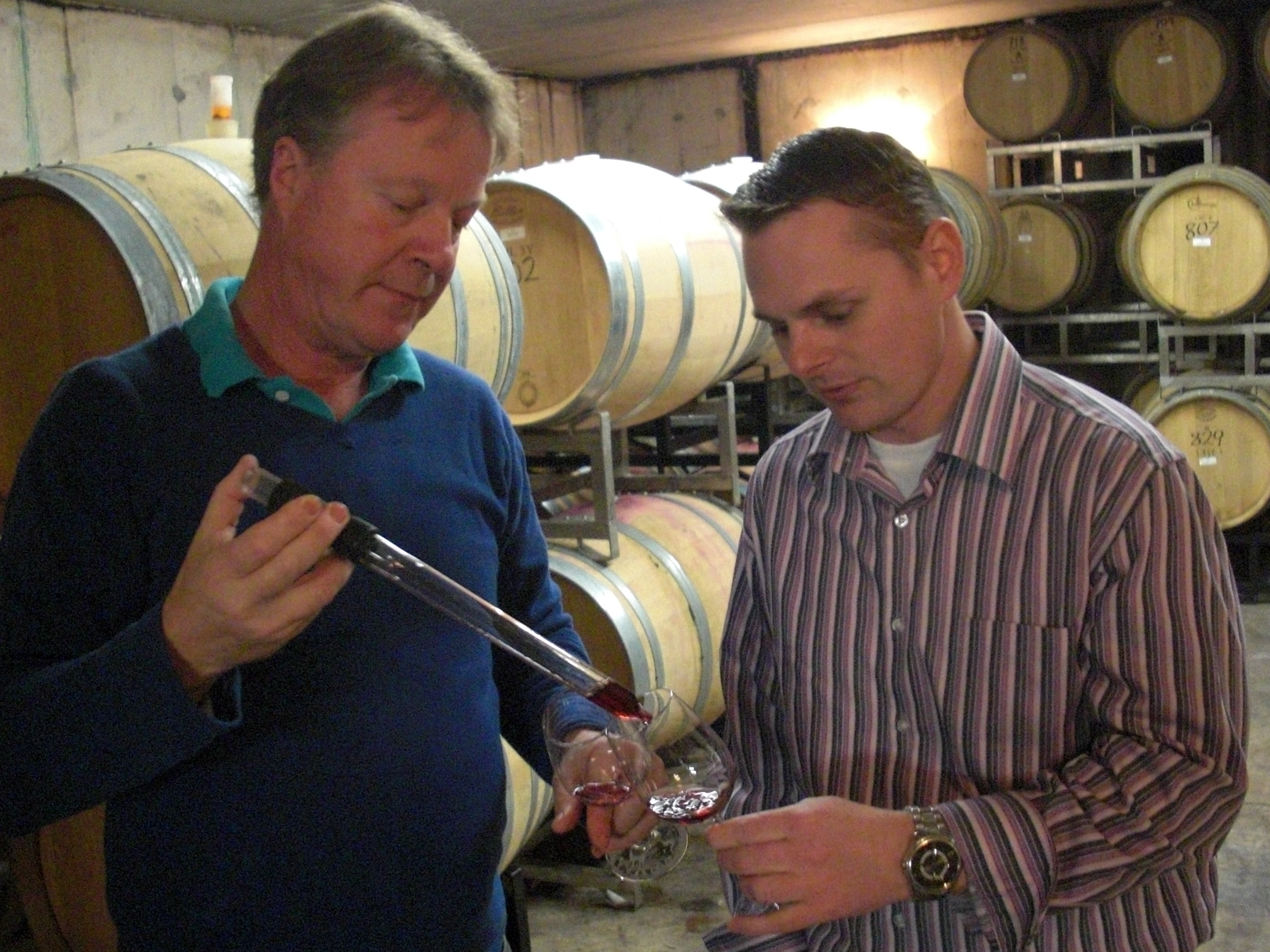



Comment here